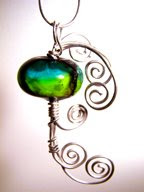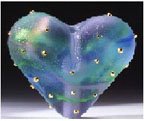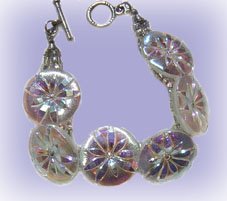Since the beginning of human culture, beads have been part of the fabric of society. They have been discovered across the globe at archeological digs going back to prehistoric times.
Beads have not only been used throughout time to provide decoration, but to indicate wealth and status. They have been used to trade, and they have been used and are still being used for religious and ceremonial purposes.
To the Yoruba people of Nigeria, they are regarded as "ambassadors of heaven," their glow uniting heaven and earth. The Yoruba believe in their transformative powers and they are utilized by rulers, priests and diviners who manipulate power and divine forces. The word 'bead' comes from the Old English 'gebed' meaning 'prayer'.
Initially beads were made from shells, seeds and nuts. Over the years as man became more sophisticated and discovered more complex materials, beads have reflected mankind's cultural evolution. Today beads are made from numerous materials, and 90% of the bead industry beads are mass produced.
Most beads are made from glass, semi-precious stones, pearls, crystals, wood, bone, clay, ceramic, porcelain, lac, cloisonné, seeds, and shells and various metals. They are intricate in design and shape and include an enormous variation of colors.
Today, the bead industry itself has become huge. In the last eight years in New York City alone hobby bead stores have multiplied...where there were just a few, there are now dozens. Many people have discovered the joy of beads and beading: the lovers of beads, the crafters, the jewelry designers, the jewelry makers, the hobbyists and the bead artists are enjoying every minute of the process--from shopping for beads to creating magnificent pieces and one-of-a-kind jewelry.
Mar 12, 2008
Subscribe to:
Post Comments (Atom)










































No comments:
Post a Comment